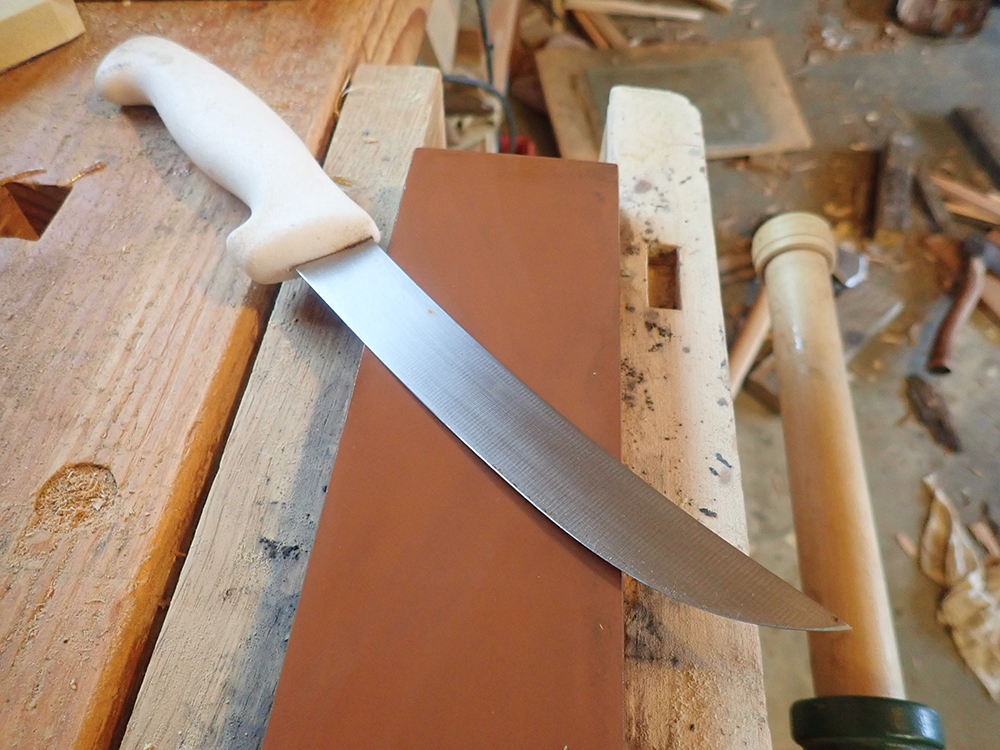
by Scott Sadil
The first time I encountered a truly sharp knife I ended up watching blood drip from my wounded thumb, a slice through an edge of the fleshy pad that might have been more serious had not the nail prevented the blade from sinking any deeper.
I was nearly twenty years old; I should have known better. And maybe I’m overstating my case, as I can clearly recall opening holiday gifts, as a kid, and my grandfather unfolding the blade of his pocket knife and, handing it over, pronouncing, “Be careful. It’s sharp.”
Still, more surprised than in pain, my free hand wrapped tightly around my bleeding thumb, I wondered why I hadn’t been formally introduced to this sort of keen edge before. The knife belonged to my buddy, Peter Syka; we were fishing off a shelf of rocks far inside the bay at Santa Rosalallita, along the west coast of the Baja peninsula, pitching wads of bait beyond the line of small, rolling breakers. No doubt the bait itself—mussels or clams or thawed-out frozen squid, I can’t remember which—demanded we have some sort of knife along, yet every knife I’d ever carried or even used in my family’s kitchen was the sort with a blade you could touch without fear of cutting yourself.
And, of course, the ones with serrated edges, I’m embarrassed to say, that were used for slicing tomatoes.

In other words, I had never really been around sharp knives. The difference, in this case, was startling.
I make these confessions reluctantly. What kind of family were you raised in? Yet we’ve all seen these households, ones in which sharp knives seem to have gone the way of homemade bread. Worse, some of these same households have members who enjoying catching fish, and sometimes bringing fish home to eat.
Not to mention sun-ripened tomatoes.
Serious cooks and sporting enthusiasts, of course, won’t tolerate dull knives. And the only way you can keep knives sharp is to learn how to sharpen them yourself. This seems to be some sort of dividing line: No doubt everybody enjoys using a sharp knife, yet for some reason I run into people, again and again, who say their knives aren’t sharp because they don’t know how to sharpen them.
My advice? Figure it out
So much has been written—plus shared online, I would guess—about how to sharpen blades of one kind or another that I hesitate to add my two cents here. Instead, I simply encourage anyone who doesn’t already sharpen his or her knives or other cutting tools to dive in and begin. There are no perfect recipes for success. But you have to start. And once you do, you’ll discover that however you go about it, your knives end up sharper than they were—and, for most of us, the pleasure of using a sharper blade inspires us to improve our sharpening skills.
I’m reluctant to recommend a book for instruction. I don’t know how useful folks find books anymore. A small, handsome volume I’ve been reading lately is Sharpen This (Lost Art Press, 2022), by Christopher Schwarz, long-time writer, woodworker, and editor of both woodworking magazines and books. Although chisels and hand planes are different from knives, the concepts behind sharpening most blades are pretty much the same. Perhaps the most important idea presented in this slender manual is simply this: “It doesn’t matter which sharpening system you choose. They all work.”
You just have to pick a method and learn it. Why? Because fresh tomatoes, I hope, aren’t the only fare to pass through your kitchen. In my own private universe, I need a sharp knife to clean fish, and then the same knife, touched up, for fashioning fillets. I can’t carry a complete sharpening system wherever I fish. But if I’m carrying a knife to deal with fish I choose to kill, I’m also carrying some way to sharpen it.
Just use it.
Gray’s angling editor Scott Sadil figures a knife or tool is just fine until he has the thought “Does this need sharpening?” The answer, he says, is always the same.
